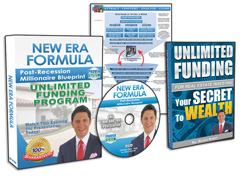
 There’s no doubt about it: flipping properties is one of the most popular and lucrative ways to invest in real estate right now. The problem is that television shows have glamorized the practice to the point where new investors are jumping in headfirst…and failing in their approach.
There’s no doubt about it: flipping properties is one of the most popular and lucrative ways to invest in real estate right now. The problem is that television shows have glamorized the practice to the point where new investors are jumping in headfirst…and failing in their approach.
Far too many real estate investors underestimate the costs involved in “traditional” flips. From renovations, to interior design, the process of fixing up a property to sell is more than most real estate investors can cover.
Costs of flipping homes can be very high, but you can mitigate many of them simply by being a smart investor and targeting flips that don’t require any repairs or renovations. Here are a few ways to cut major expenses out of your plan.
Set Your Targets
The first step to a successful and profitable career in property flipping is to realize that not every technique will be right for you. “Fix-and-flip” is the most popular format that new investors go after, but since not every renovation goes as planned, these types of flips are often far too risky.
Strategies that hinge on renovations often produce unexpectedly high costs, be it in materials, labor or just idle time on the market. Don’t believe the hype; you can definitely find ways to flip properties without renovating.
It’s ideal to go after properties with minimal to no renovation needs. That means finding deals through auctions, foreclosures and short sales, or through your own local market research. Through these strategies, you will be able to find attractive properties at low prices.
Don’t Be Bamboozled
Don’t be bamboozled by popular trends. Just because investors on TV seem like they make good money on home renovations, doesn’t mean that you will.
A 2016 real estate market analysis showed that around 12 percent of all flipped properties broke even or lost money. 28 percent of flips made a profit of 20% or less, typically considered the minimum significant profit to cover all the expenses involved in flipping. These aren’t good odds for everyday investors looking to maximize their profits with real estate.
Many of the costs associated with flipping properties stem from unnoticed and unexpected repairs and renovations that crop up along the way. A smart way to avoid these costs is to avoid “fixer-upper” properties altogether. Seek other sources for low-priced properties that can be turned over quickly rather than waited on.
Renovations are best executed by real estate investors with an excess of liquid resources and first-name-basis connections with contractors. If this doesn’t describe you, find a different way to flip.
Even when considering all the various “what-if’s” that could happen during a flip, remember that it’s just a natural extension of the principle of buying low and selling high. You don’t have to go about it in the same way that another investor does.
Learn about the real estate cycles within your area, and study properties that sell at surprisingly high prices. Get creative with your approach and your research, and soon you’ll be able to find some serious gems to flip for big profits – without the elbow grease.
Request FREE Funding Kit and Discover How To Legally Bypass Banks And Gain Direct Access To "No-Credit-Required" Funding You Can Use To Achieve Your Financial Freedom... Start Now!












